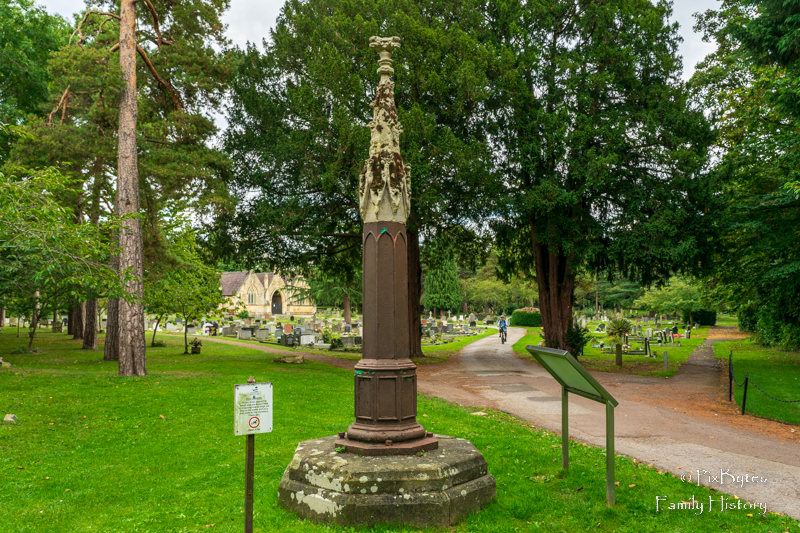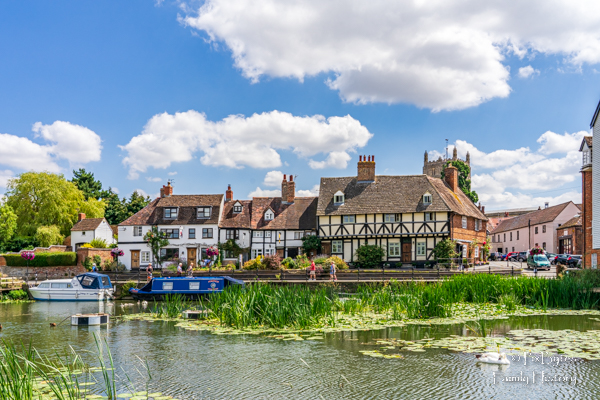Cholera in England
Cholera morbus, also known as cholera, is a severe diarrhoeal disease caused by the bacterium Vibrio cholerae. It is typically spread through contaminated water or food and can cause dehydration and electrolyte imbalances in affected individuals. Symptoms include watery diarrhoea, abdominal cramps, nausea, vomiting, and muscle cramps. In severe cases, it can lead to death within hours if not treated promptly. Cholera is still a significant public health concern in many parts of the world, especially in developing countries with limited access to safe water and sanitation facilities.
The first occurrence of Asiatic Cholera reaching England was in the Autumn of 1831 in Sunderland, and then rapidly spread throughout the country, reaching Exeter by 1832. Other less severe outbreaks were recorded in the UK in 1849 and 1853.
At the time it was believed that the disease was transmitted via breathing in foul air and the importance of clean water was not realised.
It wasn’t until 1854 that Dr John Snow proved the connection between cholera and drinking water.
Cholera Morbus in Tewkesbury
The summer of 1832 brought a dark and devastating shadow to the town of Tewkesbury, as cholera arrived and claimed its first victim on 24 July. Despite striking individuals from all walks of life, it was the humble and impoverished who were hit the hardest. Those without access to clean water, proper nutrition, and those who lived in cramped, overcrowded dwellings, were particularly susceptible to the deadly illness.
Faced with the unrelenting spread of cholera, the people of Tewkesbury turned to their faith for solace and healing. Daily services were held at the Abbey Church and other places of worship, as the community came together to pray for an end to the pestilence.
As the number of casualties grew, so too did the shortage of space for proper burials. The churchyard was soon filled to capacity, and the victims were then laid to rest in the corner of the workhouse garden, often in the dead of night.
In just two months, it is believed that 158 cases of cholera occurred in Tewkesbury, with 76 residents losing their lives to this devasting disease. The names of these unfortunate souls are forever marked in the Abbey burial register, with the letters ‘CM’ serving as a sombre reminder of the town’s loss.
| Name | Age | Name | Age | ||
|---|---|---|---|---|---|
| Daniel Wilson | 15 | Sarah Laing | 29 | ||
| Thomas Salt | 22 | Ann Morse | 6 | ||
| Samuel Hawkins | 54 | Thomas Painter | 34 | ||
| Ann Hawkins | 49 | Ann Painter | 40 | ||
| Caroline King | 4½ | Ann Preece | 60 | ||
| Mary Baldwyn | 74 | Elizabeth Hancock | 53 | ||
| James Farmer | 40 | Lovewell Fleetwood | 2½ | ||
| Joseph Wiltshire | 45 | William Parker | 57 | ||
| Richard Underwood | 50 | Harriet Haynes | 22 | ||
| Julia Symonds | 28 | Charlotte Hodges | 9 | ||
| Hannah Rice | 8 | John Cullis | 10 | ||
| Simon Woolcott | 32 | Henry Hughes | 44 | ||
| Henry Woodward | 5 | Sarah Butt | 75 | ||
| Lucy King | 37 | Martha Finch | 10 | ||
| Susannah Jeynes | 28 | Sarah Wood | 35 | ||
| Mary Wilkins | 36 | Thomas Burns | 15 | ||
| William Hawkins | 5 | Maria Huntley | 30 | ||
| John Vosper | 43 | Alice Parker | 54 | ||
| Alfred Howes | 2½ | William Wood | 32 | ||
| Ann Webb | 52 | Elizabeth Jones | 64 | ||
| Hester Morse | 35 | William Court | 76 | ||
| Ann Russell | 9½ | Ambrose Pitman | 5 | ||
| Ann Beale | 60 | William Kinson | 2 | ||
| Elizabeth Hughes | 4 | Esther Vosper | 12 | ||
| William Mann | 24 | Ann Stephens alias Weaver | 6 | ||
| Frederick Burns | 6 | Elizabeth Edgewick | 65 | ||
| Mary Birchley | 4 | Sarah Weaver [Stephens] | 50 | ||
| Esther Darke | 34 | Margaret Webb | 55 | ||
| Elizabeth Allen | 50 | Joseph Ricketts | 79 | ||
| William Birchley | 26 | William Smith | 32 | ||
| Thomas Butt | 75 | Sarah Hook | 11 | ||
| Thomas Haynes | 1½ | Maria [Mary] Jones | 2 | ||
| Thomas Cooke | 35 | Comfort Grimmett | 60 | ||
| Esther Parker | 61 | William Pardoe | 40 | ||
| Ann Davis | 36 | James Stallard | 2 | ||
| Eliza Finch | 9 | Thomas Cossam | 60 | ||
| John Greenfield | 53 | William Ricketts | 53 | ||
| Henry Tandy | 69 | Margaret Jones | 23 |
During the autumn of 1832, when the Cholera epidemic had just subsided in Tewkesbury, the town was struck again by another highly contagious disease called smallpox. Unfortunately, the smallpox resulted in many more fatalities among the town’s residents.
1849 Cholera Outbreak in Tewkesbury
Cholera returned to Tewkesbury in 1849, and as cases spiked in neighbouring towns, the community sprang into action. To prevent the spread of the disease, the town washed the streets, alleyways, and even whitewashed the dwellings of the poor. Despite their best efforts, Cholera finally arrived in Tewkesbury near the end of July, with the first death being reported on 1 August.
The first nine victims were laid to rest in the Abbey churchyard, joining the ranks of those who lost their lives to Cholera in 1832. However, as the number of casualties continued to rise, space for proper burials soon ran out. The remaining victims were taken to the Union Workhouse garden, where a large, deep pit was dug to accommodate the growing number of bodies.
The last burial took place on 8 October, and it is estimated that a total of 54 Tewkesbury residents lost their lives to the disease during this outbreak, including the 5x great-grandmother of the author. The memory of these unfortunate souls will forever be etched in the town’s history, a testament to the devastating impact of Cholera on the community.
| Name | Age | Name | Age | |
|---|---|---|---|---|
| Jane Curtis | 23 | James Bailey | 25 | |
| Mary Ann Hunt | 6 | Robert Harris | 25 | |
| Janet Dickson | 43 | Benjamin Barnes | 65 | |
| William Hollands | 26 | Henry Hughes | 5 | |
| John Thomas | 37 | George Ricketts | 1½ | |
| Ann Hodges | 59 | Charles Cook | 7 | |
| Lewington Pacey | 6 | Ann Boulten | 64 | |
| Charles King | 7 | Harriet Hovey | 3 | |
| Harriet Bevan | 43 | Samuel Summers | 5 | |
| Ann Savage | 22 | Elizabeth Lyes | 67 | |
| Mary Anderson | 43 | Ann Cook | 39 | |
| Joseph Webb | 4 | John Chitty | 66 | |
| Mary Craddock | 80 | John Hope | 67 | |
| George Yarnall | 6 | John Symons | 41 | |
| Gregory Yarnall | 60 | Edward Collins | 1½ | |
| Thomas Yarnall | 2 | Daniel Townley | 4 | |
| William Allen | 78 | Jane Russell | 18 | |
| Elizabeth Allen | 75 | Joseph Collins | 64 | |
| Thomas Pitts | 4 | Thomas Chamberlain | 3 | |
| Emma Bowers | 14 | Charles Whatton | 54 | |
| Joseph Bowers | 8 | Elizabeth Hyrons | 74 | |
| Mary Ann Heath | 2 | William Taylor | 11 | |
| Samuel Roberts | 5 | Thomas Taylor | 9 | |
| Thomas Samuel Collins | 5 | Hannah Mann | 50 | |
| Mary Nicholls | 45 | Robert Mann | 52 | |
| James Rogers | 43 | John Gallagher | 36 | |
| William Hitchcock | 3 | William Parrott | 61 |
Thankfully, Tewkesbury was able to avoid another nationwide Cholera outbreak that took place in 1853-54. Despite this reprieve, it would be several more years before the town could fully address its sanitation problems, after it was declared that “Tewkesbury was the dirtiest town in the kingdom.”
It wasn’t until 1868 that Tewkesbury began to implement proper drainage systems and by 1870, the Mythe Water Works started supplying filtered and piped water to the residents. These improvements were a critical step in preventing the spread of diseases like Cholera.

As a tribute to those who lost their lives to the devastating disease, a monument was erected close to the pit where many of the Cholera victims were buried. Today, the monument can be found near the entrance to Tewkesbury cemetery, serving as a powerful reminder of the impact that Cholera had on the community.

No responses yet